Baby Clinic Hospital
1 Ladbroke Square, Kensington, W11 3LX
Medical dates:
Medical character:
1919 - 1948
Specialist
The Baby Clinic opened in 1911 in a little house and shop with 5 rooms at 12 Telford Road, North Kensington, rented after much difficulty as no landlord wanted such a tenant. Two doctors dispensed medicine. The nurse lived in the rooms above the Clinic. On the first afternoon of its opening, five children turned up.
The Clinic had been established to provide preventative medical and surgical care to poor, weak and sickly babies and toddlers, restoring them to good health in time for them to begin school at the age of 5 years. It had been created as a memorial to Margaret MacDonald and Mary Middleton, who had both died in 1911. Margaret MacDonald was the wife of the Labour Party leader, Ramsay MacDonald (1886-1937). She was chairman of the Women's Labour League (a society working to organise and educate women for citizenship). Mary Middleton, the wife of Jim Middleton (1878-1962), Ramsay MacDonald's Assistant Secretary, was the League's Secretary.
North Kensington had been chosen as the area to set up the Clinic as, apart from being the birthplace of Margaret MacDonald, it had one of the worst infant mortality rates (that is, infants dying within one year of birth) in London - 119 deaths out of 1000 live births, which exceeded even that of Shoreditch (102/1000). (In Kensington as a whole, the infant mortality rate was 91/1000 births, compared with 75/1000 for all London).
Following WW1 living conditions in the district remained poor. An increase in the birth rate coincided with increasing unemployment, and the immaturity of parents contributed to the high infant mortality rate. Many families lived in overcrowded, unhygienic 'homes' - usually one or two rooms - with no means of storing food. A number of mothers were unable to breastfeed their babies because they had to be at work, or their breast milk had dried up and there was difficulty in obtaining fresh milk. The babies became malnourished, debilitated and rachitic; in the winters they died of bronchopneumonia and in the summers of gastroenteritis (an epidemic of enteritis in 1922 accounted for half the infant deaths).
The Clinic treated children from birth until the age of 5 years, most of whom were referred from the Infant Welfare Centres of Kensington.
In 1919 an in-patients department with 20 cots was established at 127 Ladbroke Road, as many of the chronically ill children required long-term care. The average length of stay was about 55 days. The children suffered from marasmus (malnutrition), rickets (vitamin D deficiency), debility and wasting following acute disease (usually measles), gastro-enteritis, scalds and injuries, and septic conditions (abscesses, boils); most patients had a combination of these afflictions. Some mothers could not bring themselves to leave their children (one doctor noted that the mother was afraid that"we might give it treatment"). In 1921 Queen Mary visited the Hospital and Baby Clinic, as it was then known.
In 1923 a Minor Ailment Treatment Centre for School Children was established at the request of the LCC (the Clinic had previously asked for help from the LCC to set this up, but had been refused). The Treatment Centre dealt with septic eruptions, broken chilblains, burns, bruises and, later, otorrhoea, impetigo, scabies, ringworm and fractures.
In 1924 the freehold of the Junction Hotel, a disused public house, at 92 Tavistock Road was purchased for £2673. The new premises opened three months later, when the Clinic moved from its cramped quarters in Telford Road. By this time there had been a sensational drop in the Kensington birth rate, but the Clinic and Hospital had no lack of patients.
Queen Mary visited again in 1926. By this time sunlight and ultraviolet ray ray treatments were being given to the infants. A more suitable house had been found for the Hospital, but it proved impossible to raise the funds to buy it.
During 1929 the Hospital had to be closed and disinfected four times due to outbreaks of infectious disease. In November, No. 1 Ladbroke Square was purchased for £8500. The owner of the house, Mrs Rhind, paid for it to be equipped with an up-to-date operating theatre, and also paid for the furnishings and fittings, a Frigidaire and for wireless installation. The new Hospital had central heating and could accommodate 32 cots.
In 1930 the staff consisted of three doctors, three nurses (one of whom was responsible for ultraviolet treatment) and a dispenser at the Clinic; 12 nurses looked after the in-patients at the Hospital. Because of the lack of funds and the cost of nursing staff, the six surgical beds had to be closed apart from one week per month. Some patients were transferred to the newly opened Princess Louise Hospital.
Throughout the 1930s the Clinic continued to treat infants with digestive and constitutional disorders. There were now a Mothers' Department, a Children's Dental Department, a Mothers' Dental Department, a Light and Massage Department, a Throat and Ear Department, and two clinics funded by the LCC - the Minor Ailment Treatment Centre and the Dental Treatment Department. In 1934 a new post-mortem room with adjacent mortuary chapel was built on the site of a derelict old barn in the garden of the Hospital. In 1936 Queen Mary visited again.
On 1st April 1937 the Kensington Borough Council took over financial control of the Baby Clinic at 92 Tavistock Road and, in 1938, the Hospital was renamed the Baby Clinic Hospital, with Queen Mary as its patron. By this time it had 30 beds (including 10 cots) for long-stay babies and toddlers with nutritional disorders brought about by the extreme poverty of unemployed parents. Nursing mothers were given help and advice on breastfeeding and were encouraged to rest; they attended the Hospital regularly to receive milk and two free meals. On the appointment of a masseuse the children made more rapid improvement. Those undergoing surgery for removal of tonsils and adenoids were given paraldehyde before theatre, so they were asleep and not afraid before the operation. Post-operation they were given breathing exercises by the masseuse.
By the end of the 1930s the threat of war caused intermittent alarms and upheavals, with a growing shortage of nurses and domestic staff. In 1938 the building was rewired and the bathroom rebuilt; the exterior was repainted. Air-raid precautions were an unwelcome additional expense, but the Hospital managed to just stay afloat financially.
It joined the NHS in 1948 as part of the Paddington Group, but appears to have closed shortly afterwards.
Present status (April 2009) |
|---|
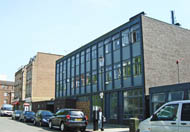
The site of the original Baby Clinic at No. 12 Telford Road now contains the Lloyd Williamson School, an independent school founded in 2000.

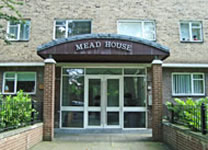

Mead House now occupies the site of the first Baby Hospital at 127 Ladbroke Road.
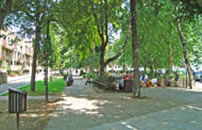
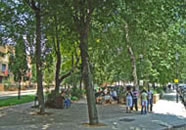
The site of the Clinic at 92 Tavistock Road is now part of a small park in front of Tavistock Crescent.
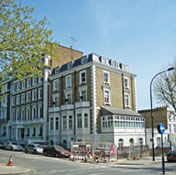

No. 1 Ladbroke Square.
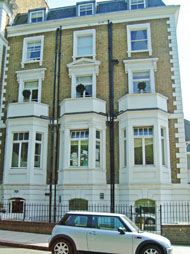
The northern elevation.
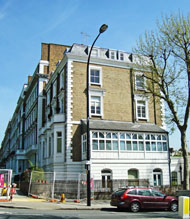
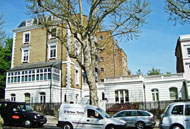
The western elevation with an extension on Ladbroke Grove.
References
Martin VJ 1955 Vital statistics of the County of London in the years 1901 to 1951. British Journal of Preventive and Social Medicine 9, 126-134.
http://rcnarchive.rcn.org.uk
www.archiveshub.ac.uk
www.nationalarchives.gov.uk/A2A
www.nottinghillliving.co.uk
www.rpts.gov.uk